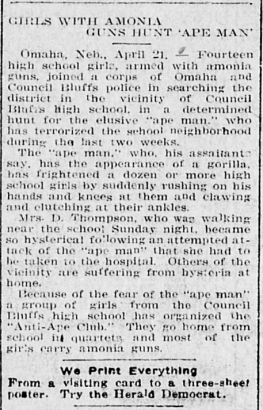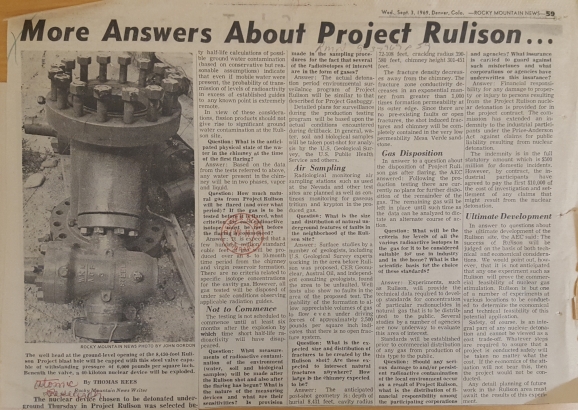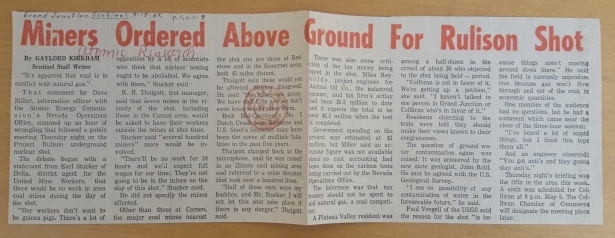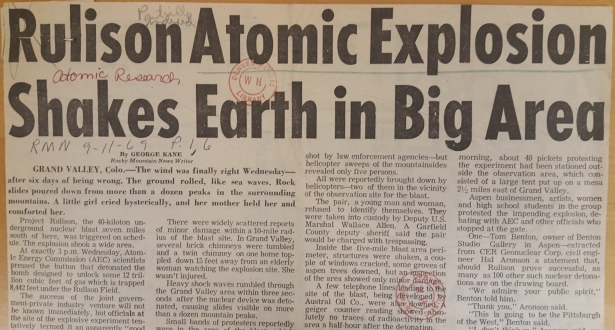Greetings! In this installment, I’m going to look at a couple of unrelated stories. The first is an odd little piece, about which I found a couple small articles. The other is a much more significant, widely covered and contemporary-ish event.
Danger in Council Bluffs, Iowa
For around two weeks in the spring of 1923, female students attending Council Bluffs High School were in a state of high alert. Numerous young women had reported being assaulted in the vicinity of the campus.
By an Ape-Man.
Around a dozen students described similar incidents, wherein the assailant, who had the “appearance of a gorilla,” would scurry from behind cover, scrabbling on his (its?) hands and knees and clutching at the victim’s shoes and ankles. Fortunately, the mysterious beastly attacker was unable to cause any significant harm, other than a couple of torn socks. In the wake of these attacks, intrepid students formed an “Anti-Ape Club,” the members of which would walk in groups of four or more, many armed with ammonia guns (essentially squirt guns filled with pressurized ammonia).
While this may sound like the plot of a Bert I. Gordon film, law enforcement at the time took the matter seriously. The Ape-Man remains at large.
Who Coulda Seen That Comin’? (or Project Rulison)
In the late 1960s, the United States government conducted a series of underground nuclear tests under the name Operation Mandrel. Also in the late 1960s, the United States government was trying to figure out a way to use nuclear warheads for peaceful, constructive purposes under the name Project Plowshares. On September 10, 1969, in a small western slope community located just north of I-70 between the towns of Parachute and Rifle, these two distinct entities joined forces for Project Rulison.
Project Rulison (named for the aforementioned small western slope community, Rulison, Colorado), was an attempt to mine natural gas via a nuclear detonation, a process referred to by the innocuous-sounding moniker “nuclear stimulation.” A nuclear warhead was lowered down a shaft to a depth of over 1 ½ miles (8442 feet, to be exact). The surrounding area was evacuated, including mine workers in the region in case the shockwaves caused collapse. The device was then detonated. The result was a 40 kiloton yield (nearly three times the size of the Hiroshima blast), the shockwave of which was felt for miles around, resulting in minor damage to some of the few homes in the area.
The detonation was extremely effective, in the sense that it released a tremendous amount of natural gas from the vaporized rock. Unfortunately, as might have been predicted (and, in fact, was predicted by some), the resulting natural gas was determined to be highly radioactive, and therefore unsuitable for commercial use. Following this disappointing result, a similar test which had been planned in Wyoming was canceled. The underlying idea wasn’t completely abandoned, however, but that’s a story for another time.
If you’d like to learn more about Project Rulison (and believe me, this barely scratches the surface), or any other topic related to Colorado or the Trans-Mississippi West, swing by Western History and Genealogy and we’ll be happy to point you in the right direction. Might as well like our Facebook page, too!







Add new comment